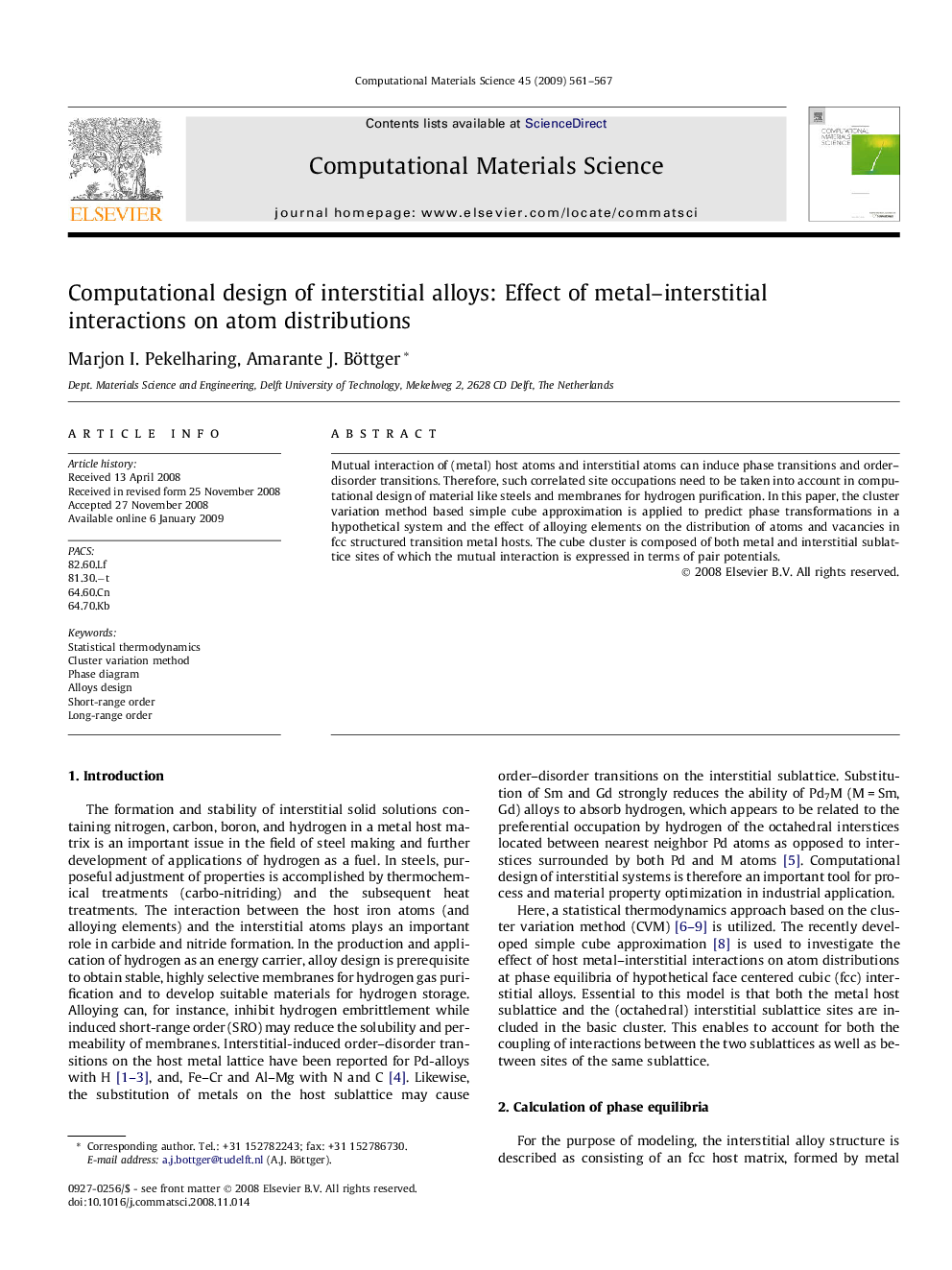| Article ID | Journal | Published Year | Pages | File Type |
|---|---|---|---|---|
| 1563436 | Computational Materials Science | 2009 | 7 Pages |
Abstract
Mutual interaction of (metal) host atoms and interstitial atoms can induce phase transitions and order–disorder transitions. Therefore, such correlated site occupations need to be taken into account in computational design of material like steels and membranes for hydrogen purification. In this paper, the cluster variation method based simple cube approximation is applied to predict phase transformations in a hypothetical system and the effect of alloying elements on the distribution of atoms and vacancies in fcc structured transition metal hosts. The cube cluster is composed of both metal and interstitial sublattice sites of which the mutual interaction is expressed in terms of pair potentials.
Keywords
Related Topics
Physical Sciences and Engineering
Engineering
Computational Mechanics
Authors
Marjon I. Pekelharing, Amarante J. Böttger,
